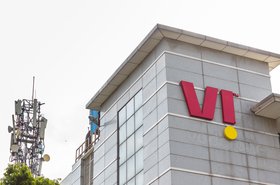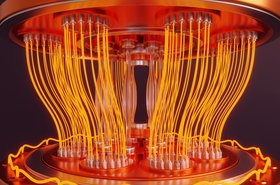With an aging but experienced network operations staff moving toward retirement and being replaced by junior engineers that lack the certifications and familiarity of existing tools, manual operations management is quickly becoming outdated – leaving data centers at risk of falling behind. Manual monitoring, troubleshooting, and remediation are increasingly time-consuming and, crucially, prone to human error.
To get it right, organizations need network automation that is not only highly reliable, but also flexible and transparent at each and every level. On the human-side, adopting automation requires thoughtful planning and seamless integration to avoid potential risks, such as security, while also ensuring that operators are fully equipped with the skills and understanding needed to get the best out of the technology.
By combining both human and machine via a flexible intent-based engine, digital twin technology and a forward-thinking approach to network-wide telemetry across multi-vendor environments, Nokia's event-driven automation (EDA) platform delivers a robust solution to eliminate human error all together, while at the same time modernizing network operations.
Mitch Moore and Jared Cordova, sales engineer and consulting engineer at Nokia, break down the advantages of network automation and explain how the company’s EDA platform is reshaping the future of data center operations.
The benefits of automation
Most modern data center network operations have evolved through automation of existing processes, with the goal of increasing agility and consistency. But while that’s a step forward, this bottom-up strategy doesn’t fully solve the key threat: human error.
“Sixty-six to 80 percent, so two-thirds or four-fifths, of all downtime incidents are related to human error, whether that’s from the vendor or on the user side. For us as vendors, that figure is far too high and ultimately unacceptable – especially when we have a service level agreement (SLA) of 99.999 percent,” explains Cordova.
Eliminating these risks via a reliable automated framework offers significant time and cost savings, boosting overall efficiency and enabling greater scalability. When routine tasks can be executed on demand, without mistakes, it creates a solid and reliable foundation for operational growth.
“The Uptime Institute conducted a survey where they asked people to name the last three causes of outages. In 91 percent of cases, it came down to data center staff either not following procedure, or the procedure itself being flawed.
“This isn’t just a new, better mousetrap. This is the end of the mice. It’s time to make automation strong and effective from top to bottom,” says Moore.
With effective automation in place, there’s no need to second-guess whether a process exists or if it can be trusted. Everything is validated, clearly documented, and fully understood, bringing structure and predictability to a space that’s too often treated like a testing ground.
EDA: An innovative approach
Transforming how automation is perceived and implemented in critical infrastructure is a key foundation for effective installation and usage, establishing trust in the system itself and ensuring its longevity. Moore explains:
“We all know that it’s only human to make mistakes – but to really mess things up, you need automation. So, we asked ourselves: how do we change that mindset? By making automation predictable and accessible. That’s why we’ve built a modern platform that delivers reliable, clear, and consistent outcomes.”
The most important step in building a successful automation framework is to start with the right foundation and core principles. Rather than tweaking systems that were never designed for scale, effective automation means building your network around business goals – not the other way around.
And it’s not about replacing humans, it’s about making life easier for those manning the fort, so even if the humans change, the tech and processes do not:
“We all eventually move on to the next big thing. And when we do, our team back at the old job still has to manage what we’ve left behind,” Moore adds. “So, when we design automation, we aim to make it stronger, more resilient, and community-driven.”
Reliable tools and clearly defined lifecycle management are central to Nokia’s platform and broader network philosophy. Because, as Moore points out: “there’s no value in trying to optimize a system that wasn’t working effectively to begin with.”
Constructed with Kubernetes, EDA offers a solid and scalable network infrastructure with inbuilt resilience. Applications can be scaled up or down based on real-time demand, changes can be monitored across multiple cloud platforms, and failed containers or pods can be restarted automatically, ensuring high availability and performance continuity.
The three pillars of EDA: Reliability, observability, and flexibility
Reliability
Intent-based networking (IBN) is a foundational element for creating dependable, intelligent systems. Once you define your desired business outcomes, such as compliance or policy goals, IBN handles the underlying tasks using allocated resources. Working in a closed-loop model, the network continuously monitors and adjusts to maintain alignment with those original goals.
EDA is an intent-based automation platform with configuration and state abstraction to make data center network automation predictable, consumable and adaptable.
“For example, we give users IP pools with subnets of IP addresses that don’t require manual configuration. You just enter them into your intent, and they’re automatically and sequentially assigned to each of your nodes during setup,” explains Cordova. “You can also group configurations using labels and apply changes to an entire segment of the network in a single, unified transaction.”
And while the system is designed to reduce mistakes, it also includes instant rollback functionality, so if the wrong configuration is selected, it can be undone at the click of a button – just as quickly and easily as it was implemented.
“We’ve integrated a digital twin to enable pre- and post-checks,” Cordova continues. “Before a change is applied, pre-checks verify whether the configuration will be valid. Once it’s deployed, it’s checked again to confirm that your intent matches what’s actually running.”
Observability
Future-ready automation systems can effectively simplify the complexity of modern networking. To achieve that, EDA leverages AI-driven natural language processing to make querying and customization easier.
“We built a query language, supported by AI, that allows you to explore any part of the network or node you’re configuring and view data in real time,” says Cordova.
“You’ve got EQL, which is our event-driven automation language. It may not seem user-friendly at first, but using the natural language feature, you can just type in a question such as, ‘how many Border Gateway Protocol (BGP) neighbors do I have?’ and the system will respond with the answer, plus the corresponding Event Query Language (EQL) you require.”
In contrast to the complexity of the technology that underpins the platform, Nokia understands the end-user’s need for simplicity, therefore the addition of an App Store, makes it easy to integrate third-party tools and plugins. Whether it's AI functionality or operational modules, you can install applications and see them live on your dashboard instantly.
The customizable user interface (UI) also gives operators full control over their dashboards. With drag-and-drop UI builders, you can design a home screen tailored to your daily workflows, critical tasks, and preferences.
Features such as these are key in helping to instill confidence in automation and make the system user-friendly by offering transparency and customization quickly and easily.
Flexibility
The ability to integrate with existing tools is key to making automation practical and accessible. EDA supports both on-premise and SaaS deployment, with full management provided by Nokia for teams that may not have the necessary internal resources or expertise. Cordova offers a real-world example:
“If you make a change in EDA, upload a new intent, or bring up BGP peers from a new configuration, that information can be pushed automatically to Teams, Outlook, Discord, you name it.
“We’re now working with IT service management as another embedded application in EDA. You install it, and instantly, you’re up and running. You can integrate your service platform of choice so all your operations stay in sync with the network you’re using.”
Effective automation responds to real-world challenges, rethinking conventional practices and avoiding the limitations of a bottom-up approach that all too often overlooks human error. By integrating with familiar management platforms and pairing that with digital twin testing for safe rollouts, the platform offers impressive flexibility and simplicity when deploying automation at scale.
As demand for data centers continues to surge, operators must adopt agile and intelligent solutions to stay ahead in a fast-moving, high-pressure environment. Automation platforms like Nokia’s EDA hold nearly limitless potential, empowering organizations to streamline, scale, and improve their networks quickly, confidently, and without the guesswork.
Watch the full tech showcase from Nokia at DCD>Compute New York here.
More from Nokia
-

Nokia sells 0.95 percent stake in India's Vodafone Idea
Scoops $92 million in the process
-

Nokia secures 5G RAN deal with T-Mobile in US
Will support T-Mobile's 5G expansion plans
-

Nokia, Telia, and Finnish Defense Forces carry out 5G Standalone slice across border
The test was carried out last month across three countries


